It's time to grab your shovels and embark on a gruesomely delightful adventure – the creation of the Ghastly Lenormand Deck!
I have a clear vision for the deck's aesthetics and mood. It should be undeniably spooky, but functionality remains paramount. We want a deck that's both visually captivating and easy to use for readings, not just a pretty face (though a touch of ghastly glamour is essential!). Every element should serve a purpose, be meaningful, and of course, be chillingly evocative.
Madame Lenormand Takes Center Stage
To kick things off, I've begun with Card 29, "The Woman." I've developed a character inspired by Madame Lenormand ...in the afterlife, who will be the model for this specific card and set the overall tone for the deck.
A Journey Through Victorian Mourning
Research was crucial for establishing the right atmosphere. My focus landed on the Victorian era (1820-1914), a period known for its macabre sensibilities. Since Madame Lenormand lived between the French Revolution and the Napoleonic Era (1772-1843), this aligns perfectly.
To delve deeper into Victorian mourning customs, I removed the dust from the inspiring book "Images of Man and Death" by medievalist Philip Aries. I book I studied years ago. It provided fascinating historical insights into how death was conceptualized and commemorated across different cultures.
Next, I gathered reference materials – vintage magazines, articles, and books that dissected the Victorian mourning dress code. These resources, along with captivating historical photographs (including the unsettling yet strangely beautiful practice of post-mortem photography), proved invaluable.
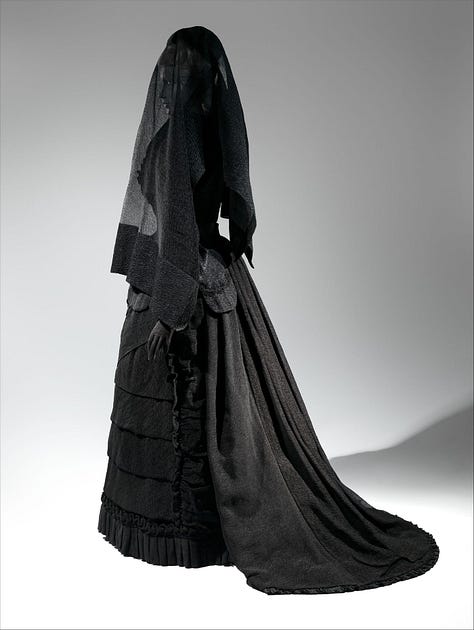
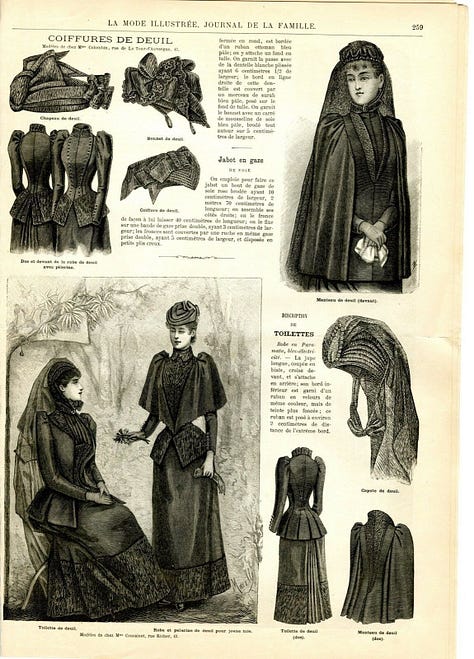
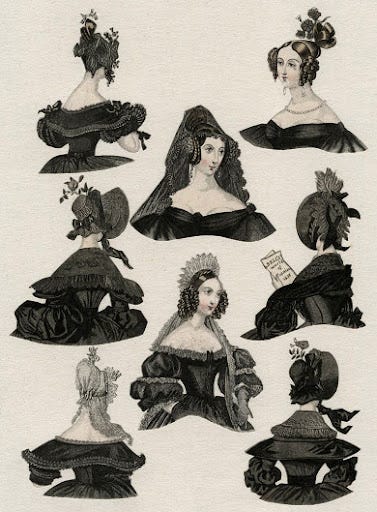
Post Mortem Photography and the Democratization of Memory
The invention of photography revolutionized society, and for our purposes, it democratized the "market of memory." Previously, only the upper class could afford portraits (paintings) to immortalize their loved ones. Photography, though expensive, offered a more accessible option.
However, for the lower classes, photos often weren't taken during joyous occasions. In many cases, the only portrait they had of a loved one was a post-mortem photograph; a staged photo with the deceased dressed in their Sunday best and posed with family against a serene backdrop. These photos, usually collected in special albums, offer a window into Victorian mourning customs and attitudes towards death.
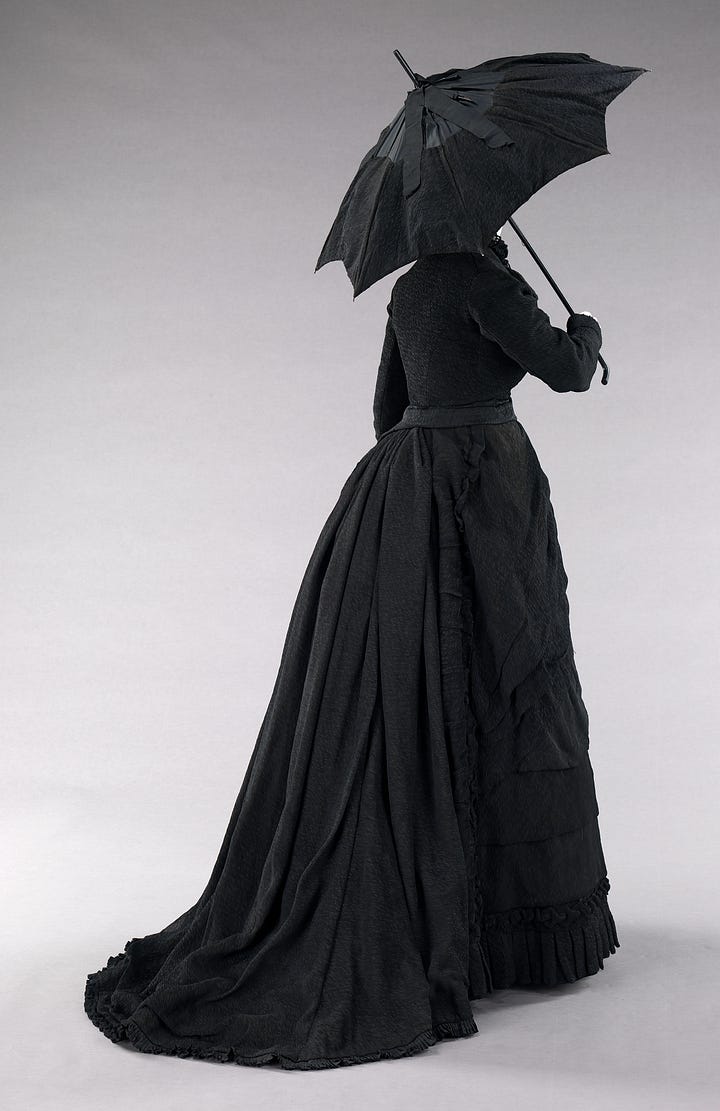

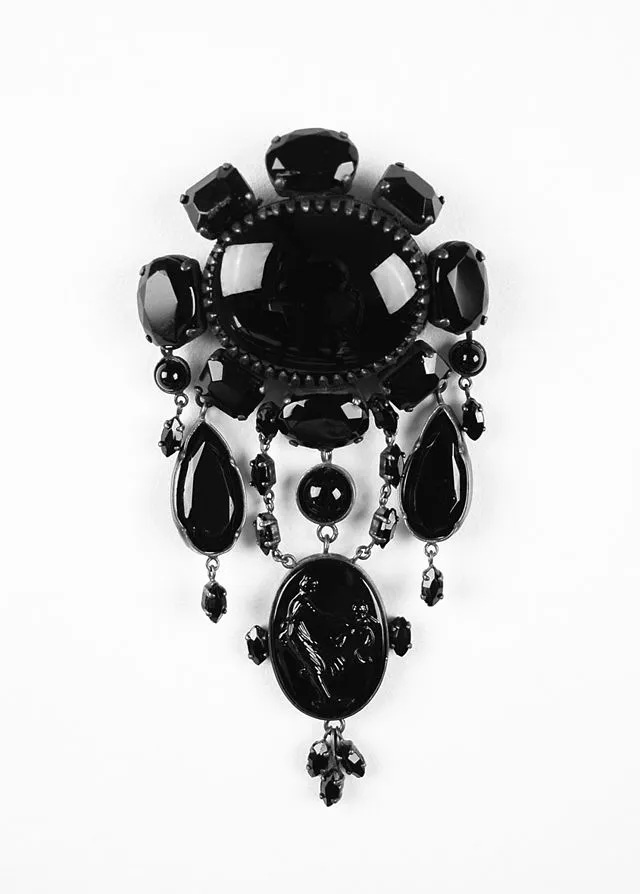
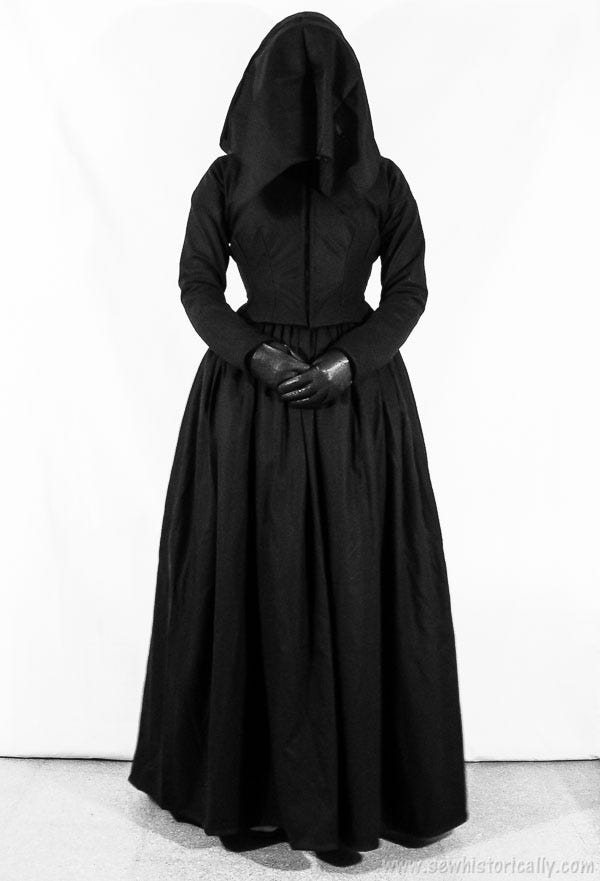
It's important to approach these practices with respect. These weren't simply macabre displays; they reflected the deep love and loss experienced by families. They can be unsettling but their stories reminds us of how ephemeral is our existence and the importance of living life to the fullest ("carpe diem"), a lesson we can carry into our own time.
These reflections are crucial because I want the Ghastly Lenormand Deck to be more than just spooky imagery. It should embody ideas, values to shine (or maybe gloom) under my touch of wry humor.
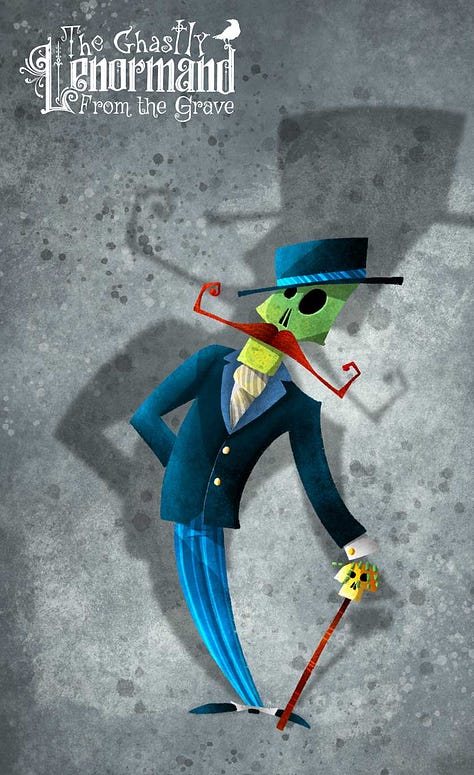
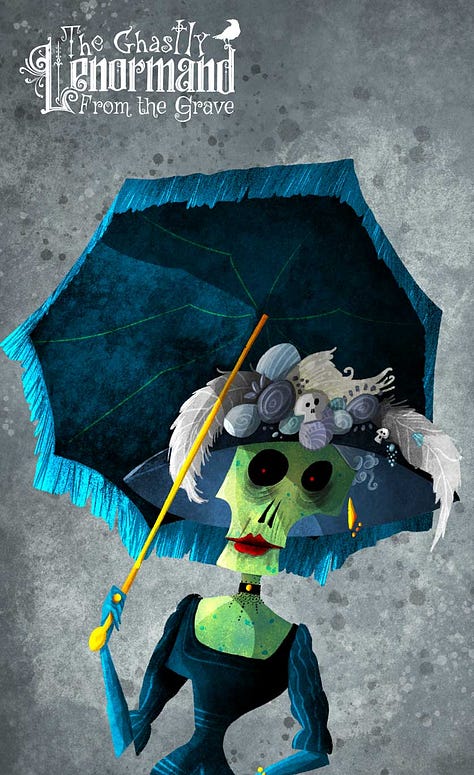
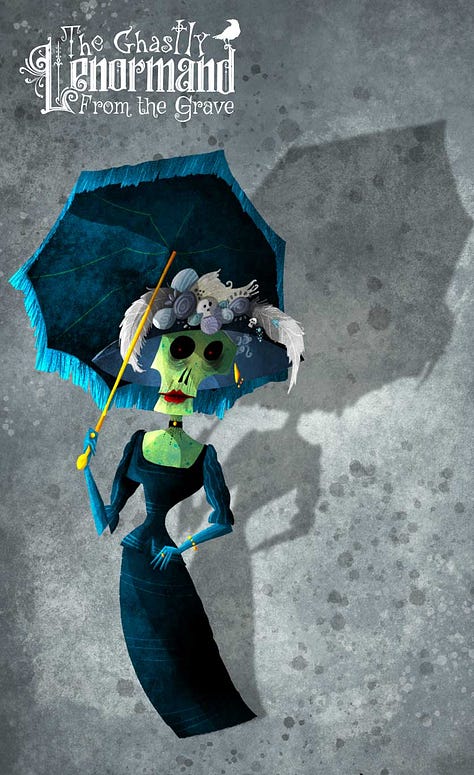
These images are the pure illustrations I would like to use for the cards. I am already studying various graphic elements and the design of the cards, including their numbers and decorative motifs. As you may have noticed, I fell in love with the photo portraying the lady in black with a spooky dark parasol. It gives her a sense of mystery that I wanted to convey.
A curious Note about Mourning
Mourning for parents lasted one year — Six months in crape trimmings, three in plain black, and three in half-mourning. Additionally, society activities would be given up for three months.Mourning for grandparents lasted nine months — The first mourning (crape) was worn for three months; second mourning, black without crape, also worn for three months; and half-mourning for three more months. Additionally, society activities would be given up for three months.
Mourning for siblings lasted six months — Crape for three months, plain black for two months, and half mourning for one month. Additionally, society activities would be given up for three months.
Mourning for aunts, uncles, nephews, and nieces lasted three months — No crape, but plain black fabric with jet ornaments.
Mourning for great aunts and great uncles lasted two months — Mourning was conducted without crape.
Mourning for first cousins lasted six weeks — Three weeks was half mourning.
Stay Tuned for Ghastly Revelations!
Andrea






Andrea, your talent never ceases to amaze me! I am honored to follow along in the fabulous journey!!!